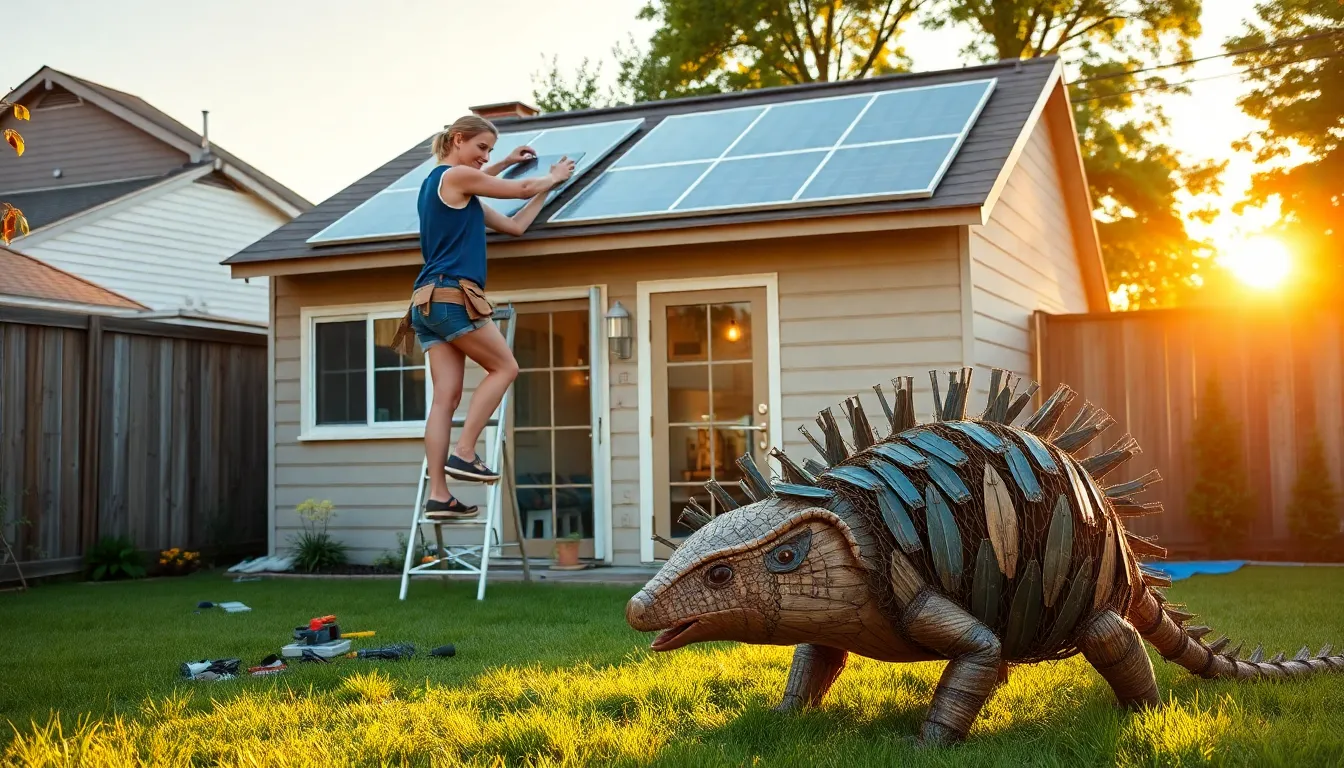As the world continues to pivot towards sustainable living and renewable energy, the excitement around DIY solar projects is palpable. One innovative concept gaining traction is the DIY Solar Pangolin, a solar-powered solution that marries functionality and creativity. This article will explore what a DIY Solar Pangolin is, how to create one, and the benefits of utilizing solar energy in daily life.
Table of Contents
ToggleUnderstanding Solar Energy and Its Benefits

Solar energy is a renewable and clean source of power harnessed from the sun. Utilizing solar panels, individuals can convert sunlight into electricity, significantly reducing reliance on fossil fuels. The benefits of embracing solar energy extend beyond just eco-friendliness:
- Cost Savings: By producing your own electricity, you can decrease your utility bills and potentially gain independence from energy companies.
- Increased Property Value: Homes equipped with solar energy systems typically have higher resale values, making them more attractive to buyers.
- Environmental Impact: Solar energy systems contribute to reducing carbon footprints, promoting a healthier planet.
- Energy Independence: Solar power gives homeowners the ability to generate their own electricity, shielding them from fluctuating energy prices.
Understanding these advantages sets the stage for exploring the DIY Solar Pangolin, a creative way to use solar energy in a unique structure.
What Is a DIY Solar Pangolin?
A DIY Solar Pangolin is a versatile, solar-powered structure designed to harness sunlight for various energy needs. Its name is inspired by the pangolin, known for its unique and protective armor-like exterior. Likewise, the DIY Solar Pangolin is engineered to protect and enhance the functionality of solar panels while providing a charming aesthetic for yards or gardens.
These solar installations can serve different purposes, such as powering lights, heating water, or charging devices. The design can be uniquely tailored according to personal style and energy requirements, making the DIY Solar Pangolin an exciting project for eco-conscious individuals.
Steps to Create Your Own DIY Solar Pangolin
Creating a DIY Solar Pangolin involves careful planning and execution. Here’s a step-by-step guide to help you embark on this exciting DIY project.
Materials Needed for Your Solar Pangolin Project
- Solar Panels: Choose the size and type based on your energy needs.
- Batteries: These will store the energy generated by the solar panels.
- Inverter: Convert the stored energy into a usable format for household devices.
- Support Structure Materials: Wood, metal, or other materials to form the “shell” of your pangolin.
- Tools: Basic tools such as a drill, saw, and ladder will be essential for construction.
- Wiring and Connectors: Necessary for electrical connections between components.
Design Considerations for Solar Pangolins
Designing your DIY Solar Pangolin goes beyond aesthetics. Consider the following aspects:
- Orientation: Position the solar panels to maximize sunlight exposure throughout the day.
- Weather Resistance: Choose durable materials that can withstand environmental elements.
- Size: Ensure the structure is appropriately scaled for the available space and energy requirements.
- Accessibility: Design for easy access to components for maintenance and adjustments.
Installation and Maintenance Tips
Once your DIY Solar Pangolin design is complete, the next steps involve installation and ongoing maintenance.
Installation Tips:
- Follow Local Regulations: Check to ensure your project complies with local building codes and regulations about solar installations.
- Secure Mounting: Ensure the solar panels are firmly mounted to avoid winds or debris dislodging them.
- Electrical Connections: Double-check all wiring connections for safety. If unsure, consider hiring a professional electrician.
Maintenance Tips:
- Regular Inspections: Periodically check for debris on the panels, and clean them if necessary to ensure optimal performance.
- Battery Care: Monitor the condition of the batteries, looking for any signs of corrosion or damage.
- System Testing: Conduct routine checks on the inverter and connections to make sure everything is functioning correctly.
Cost Analysis and ROI on DIY Solar Projects
Investing in a DIY Solar Pangolin comes with initial costs, but the long-term benefits can outweigh these expenses. Here’s a breakdown of potential costs and return on investment:
Initial Costs:
- Solar Panels: Depending on the type and size, costs can vary significantly. Expect to spend anywhere from $2,000 to $10,000.
- Batteries and Inverters: These can add another $500 to $2,000 to the total cost.
- Materials: Including structural materials, tools, and miscellaneous supplies, the total could rise to $3,000 – $5,000.
Potential Savings:
- Utility Bills: After installation, homeowners often see significant reductions in their monthly energy bills.
- Government Incentives: Many states offer tax credits and incentives for solar adoption, which can help recover installation costs.
Return on Investment:
With anticipated savings and incentives factored in, many DIY solar projects break even in 5-10 years. Besides, the increased property value and energy independence enhance long-term financial benefits, making a DIY Solar Pangolin not just a creative try but a wise financial investment.
